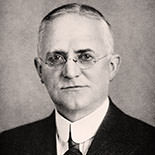 George Eastman (July 12, 1854 – March 14, 1932) was an American innovator and entrepreneur who founded the Eastman Kodak Company and popularized the use of roll film, helping to bring photography to the mainstream.
George Eastman (July 12, 1854 – March 14, 1932) was an American innovator and entrepreneur who founded the Eastman Kodak Company and popularized the use of roll film, helping to bring photography to the mainstream.
Roll film was also the basis for the invention of motion picture film in 1888 by the world’s first film-makers Eadweard Muybridge and Louis Le Prince, and a few years later by their followers Léon Bouly, Thomas Edison, the Lumière Brothers, and Georges Méliès.
He was a major philanthropist, establishing the Eastman School of Music, and schools of dentistry and medicine at the University of Rochester and in London; contributing to RIT and the construction of MIT’s second campus on the Charles River; and donating to Tuskegee and Hampton universities. In addition, he provided funds for clinics in London and other European cities to serve low-income residents.
In his final two years Eastman was in intense pain caused by a disorder affecting his spine. On March 14, 1932 Eastman shot himself in the heart, leaving a note which read, “To my friends: my work is done. Why wait?”
The George Eastman House, now operated as the International Museum of Photography and Film, has been designated a National Historic Landmark.
In 1884, Eastman patented the first film in roll form to prove practicable; he had been tinkering at home to develop it. In 1888, he perfected the Kodak camera, the first camera designed specifically for roll film. In 1892, he established the Eastman Kodak Company, in Rochester, New York. It was one of the first firms to mass-produce standardized photography equipment. The company also manufactured the flexible transparent film, devised by Eastman in 1889, which proved vital to the subsequent development of the motion picture industry.